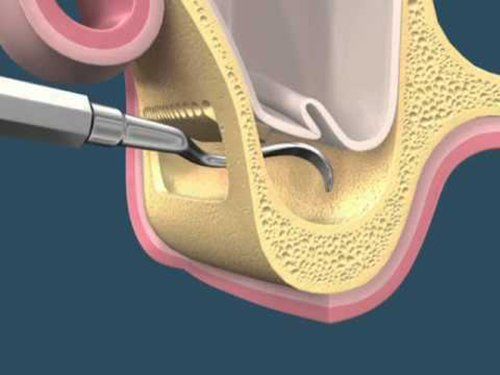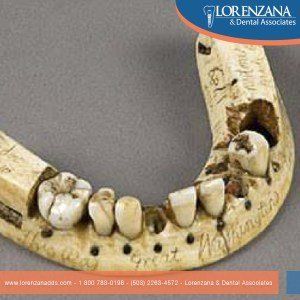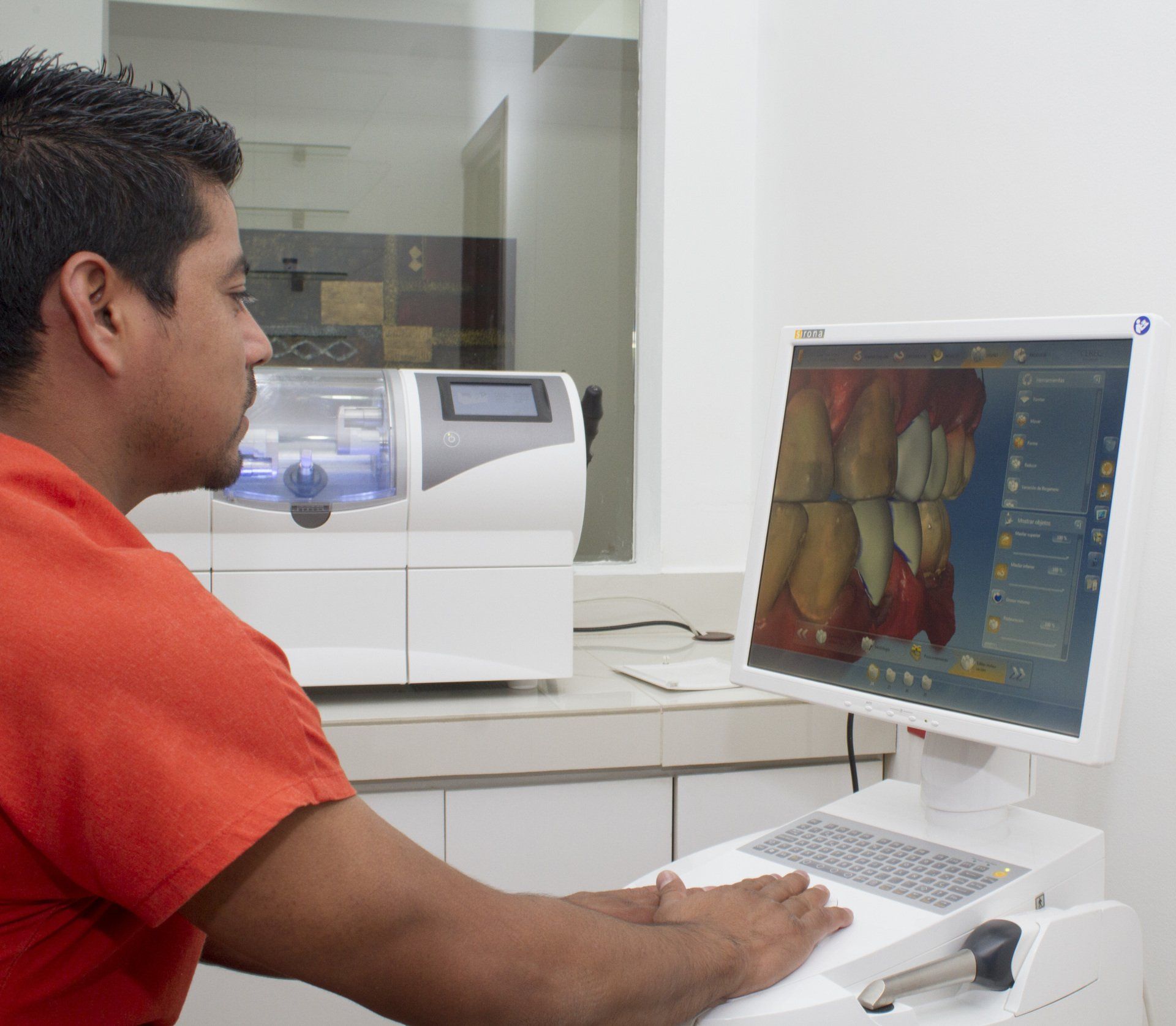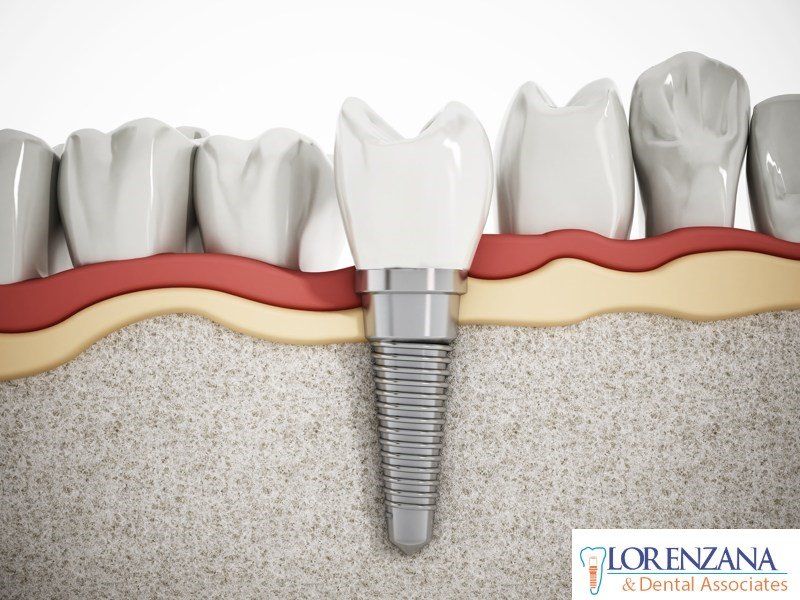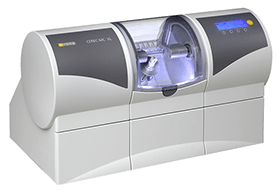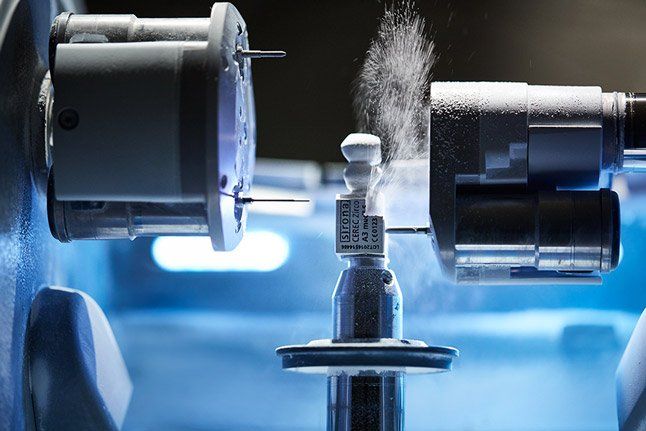Biological complications with dental implants: their prevention, diagnosis and treatment
Biofilms form on all hard non-shedding surfaces in a fluid system, i.e. both on teeth and oral implants. As a result of the bacterial challenge, the host responds by mounting a defense mechanism leading to inflammation of the soft tissues.
In the dento-gingival unit, this results in the well-described lesion of gingivitis. In the implanto-mucosal unit, this inflammation is termed "mucositis". If plaque is allowed to accumulate for prolonged periods of time, experimental research has demonstrated that "mucositis" may develop into "periimplantitis" affecting the periimplant supporting bone circumferentially. Although the bony support may be lost coronally, the implant still remains osseointegrated and hence, clinically stable. This is the reason why mobility represents an insensitive, but specific diagnostic feature of "periimplantitis". More sensitive and more reliable parameters of developing and existing periimplant infections are "bleeding on probing", "probing depths" and radiographic interpretation of conventional or subtraction radiographs. Depending on the diagnosis made continuously during recall visits, a maintenance system termed Cumulative Interceptive Supportive Therapy (CIST) has been proposed. 1. Diagnosis and Treatment Planning Many patients want dental implants but do not know if they are good candidates for implants. your dentist are best qualified to determine if you are a good candidate. If you feel that implant dentistry is an option you'd like to explore, to complete a full examination and health history. In addition to standard dental radiographs, this may include a three-dimensional dentascan using a noninvasive i-CAT dental scanner. Lorenzana & Dental Associates uses a highly sophisticated imaging program called Simplant. Simplant allows to analyze dentascan images directly on the computer and virtually simulate implant placement before any treatment takes place. This sophisticated technology is used in the planning phase to help determine your body's ability to support a dental implant. He can analyze bone density and volume very accurately, which is a huge step toward the ultimate goal of placing dental implants that provide years of comfort, function, and esthetics. Following the diagnostic phase we will work closely with your dentist to formulate your treatment plan options. If you do not have a dentist, we can help you prepare the best treatment plan possible. We will then present our findings and recommendations to you during a treatment conference. Your questions and concerns are important to us, and our team will work very closely with you to help make your procedure a success. We will also discuss fees and insurance at this time; there are many types of insurance plans, and coverage for implants varies, so we will work diligently to assist you in obtaining all the benefits to which you may be entitled. 2. Implant Placement The implants themselves are titanium posts that are inserted painlessly into the bone to act as tooth root substitutes. In other words, the implant replaces the root of the missing tooth. First, the gum and bone are made numb with a local anesthetic, or you can be put under sedation if you prefer. we will gently insert the implant into the bone, where it will undergo a process called osseointegration. This means that the bone grows onto the surface of the implant. The implantation process takes only about 10 minutes per implant. Any small stitches are dissolvable and do not require additional visits for removal. Most patients experience only mild discomfort, which is treatable with a Tylenol or Motrin tablet. It takes only 8 weeks in most instances for fusion of the implant to the bone to occur. Sometimes the implants are submerged under the gum during this healing phase. Sometimes they are left exposed flush with the gum. If they are submerged, a second procedure will be needed to expose the implant after it has integrated with the bone. If the implant was left exposed, the implant uncovering phase is bypassed, and the prosthetic phase can begin as soon as osseointegration is complete. In many cases, a single tooth can be replaced with just 3 visits over a period of only 8 weeks. 3. Implant Uncovering If the implants were submerged at the time of placement, a second procedure will be needed to expose the implants. This is a minor procedure in which a fast, comfortable laser is generally used on the gum to uncover the dental implant. A titanium healing abutment is placed on top of the implant, and the gum is carefully replaced around it. The prosthetic phase can usually begin in 2–3 weeks' time. Implants are not routinely submerged at the time of placement. They may be submerged when bone grafts are placed at the time of implant placement, or it a removable tooth replacement will be pressing on the implants during healing. 4. Prosthetic Phase Your replacement teeth will now be created and will be held in place by the dental implants. This phase will take varying lengths of time, depending on the type of restoration planned we will discuss this with you before your treatment begins. Your implant restoration may be cemented onto the implants, or it may be screwed into place. Implants can be used to replace a single tooth, several missing teeth, or a whole arch of missing teeth. Implants can also be used to secure a loose denture, creating a more permanent solution. 5. Maintenance Phase Just like your natural teeth, dental implants need ongoing maintenance if you are to realize their full benefit over many decades. This will include proper care at home as well as professional maintenance. We will work closely with your dentist to custom tailor your maintenance program to your specific needs, but you can always expect to need to brush and floss regularly and to keep your appointments with Lorenzana & Dental Associates for ongoing preventive care. http://www.drscharf.com/dental-implants-long-island-ny/phases-of-treatment.html http://www.ncbi.nlm.nih.gov/pubmed/11168263
Complicaciones biológicas con implantes dentales: su prevención, diagnóstico y tratamiento
Las biopelículas se forman en todas las superficies no-vertimiento duras en un sistema de fluidos, es decir, tanto en los dientes y los implantes orales. Como resultado de la exposición bacteriana, el anfitrión responde mediante el montaje de un mecanismo de defensa que conduce a la inflamación de los tejidos blandos. En la unidad dento-gingival, resulta en una lesión mejor descrita como la gingivitis. En la unidad de-IMPLANTO mucosa, esta inflamación se denomina "mucositis". Esto pasa Si se permite que la placa se acumule durante períodos prolongados de tiempo, la investigación experimental ha demostrado que "mucositis" puede convertirse en "periimplantitis" que afecta a la periimplantaria hueso de soporte circunferencialmente. Aunque el soporte óseo se puede perder coronal, el implante sigue siendo osteointegrados y por lo tanto, clínicamente estable. Esta es la razón por la movilidad representa una característica de diagnóstico insensible, pero específico de "periimplantitis". Parámetros más sensibles y más confiables de desarrollo y existente infecciones periimplantares están "sangrado al sondaje", "las profundidades de sondaje" y la interpretación radiográfica de las radiografías convencionales o resta. Según el diagnóstico realizado de forma continua durante las visitas de recuerdo a un sistema de mantenimiento de denominación acumulativa y como Terapia de Apoyo interceptivo (CIST) es lo que ha sido propuesto. 1. Diagnóstico y planificación del tratamiento Muchos pacientes quieren implantes dentales, pero no saben si son buenos candidatos para los implantes, su dentista es el más capacitado para determinar si usted es un buen candidato. Si usted siente que la implantología es una opción que le gustaría explorar, puede completar un examen completo y los antecedentes de salud. Además de las radiografías dentales estándar, esto puede incluir una tridimensional Dentascan utilizando un escáner dental i-CAT no invasiva. Se utiliza un programa de imágenes altamente sofisticado llamado Simplant. para analizar imágenes Dentascan directamente en el ordenador y simular virtualmente la colocación del implante antes de cualquier tratamiento se lleva a cabo. Esta sofisticada tecnología se utiliza en la fase de planificación y determinar la capacidad de su cuerpo para soportar un implante dental. Se puede analizar la densidad ósea y el volumen de forma muy precisa, lo cual es un gran paso hacia el objetivo final de la colocación de implantes dentales que proporcionan años de comodidad, funcionalidad y estética. Después de la fase de diagnóstico, se trabajará en estrecha colaboración con su dentista para formular opciones de su plan de tratamiento. Si usted no tiene un dentista, Lorenzana & Dental Associates puede preparar el mejor plan de tratamiento posible. El dentista presentará entonces sus conclusiones y recomendaciones a que durante una conferencia de tratamiento han salido a relucir Sus preguntas y preocupaciones que son importantes para nosotros, y nuestro equipo trabajará muy de cerca con usted para ayudar a que su procedimiento sea un éxito. También discutiremos comisiones y seguros en este momento; hay muchos tipos de planes de seguro, y la cobertura de los implantes varía, por lo que vamos a trabajar diligentemente para ayudarle a obtener todos los beneficios a los que puede tener derecho. 2. Colocación del implante Los implantes en sí son postes de titanio que se insertan sin dolor en el hueso para actuar como sustitutos de la raíz del diente. En otras palabras, el implante sustituye a la raíz del diente que falta. En primer lugar, la encía y el hueso se hacen adormecida con un anestésico local, o que se pueden poner bajo sedación, si lo prefiere. Se insertará suavemente el implante en el hueso, donde se someterá a un proceso denominado osteointegración. Esto significa que el hueso crece sobre la superficie del implante. El proceso de implantación tarda sólo unos 10 minutos por implante. Los pequeños puntos de sutura son solubles y no requieren visitas adicionales para el retiro. La mayoría de los pacientes experimentan sólo una molestia leve, que es tratable con un Tylenol o Motrin tablet. Se tarda sólo 8 semanas en la mayoría de los casos para la fusión del implante con el hueso que se produzca. A veces, los implantes se sumergen debajo de la encía durante esta fase de curación. A veces se les deja expuestos a ras de la goma. Si están sumergidos, será necesario un segundo procedimiento para exponer el implante después de que se ha integrado con el hueso. Si el implante se deja expuesto, la fase de descubrimiento de implante se pasa por alto, y la fase protésica puede comenzar tan pronto como oseointegración se haya completado. En muchos casos, un solo diente se puede sustituir con sólo 3 visitas durante un período de sólo 8 semanas. 3. Descubrimiento del Implante Si los implantes se sumergieron en el momento de la colocación, será necesario un segundo procedimiento para exponer los implantes. Este es un procedimiento menor en el cual un láser rápido, cómodo se utiliza generalmente en la encía para descubrir el implante dental. Un pilar de curación de titanio se coloca en la parte superior del implante, y la goma se sustituye cuidadosamente alrededor de ella. La fase protésica generalmente puede comenzar en el tiempo de 2-3 semanas. Los implantes no se sumergen habitualmente en el momento de la colocación. Pueden estar sumergidos cuando injertos óseos se colocan en el momento de la colocación del implante, o un reemplazo de dientes extraíbles se presionan sobre los implantes durante la curación. 4. protésica Fase Su diente de reemplazo se creará ahora y se llevará a cabo en el lugar por los implantes dentales. Esta fase tendrá una duración variable, dependiendo del tipo de restauración planificada; se discutirá esto con usted antes de que comience su tratamiento. Su restauración implante puede ser cementado sobre los implantes, o puede ser atornillado en su lugar. Los implantes pueden ser usados para reemplazar un solo diente, varios dientes que faltan, o todo un arco de los dientes perdidos. Los implantes también pueden ser utilizados para asegurar una dentadura suelta, creando una solución más permanente. 5. Fase de Mantenimiento Al igual que los dientes naturales, los implantes dentales necesitan mantenimiento continuo si va a darse cuenta de su beneficio completo durante muchas décadas. Esto incluirá la atención adecuada en el hogar, así como el mantenimiento profesional. Se trabajará en estrecha colaboración con su dentista para adaptar a medida su programa de mantenimiento a sus necesidades específicas, pero siempre se puede esperar a tener que cepillarse y usar el hilo dental con regularidad y mantener sus citas con su dentista y Lorenzana & Dental Associates para la atención preventiva en curso. http://www.drscharf.com/dental-implantes-largas-island-ny/phases-de-treatment.html http://www.ncbi.nlm.nih.gov/pubmed/11168263
